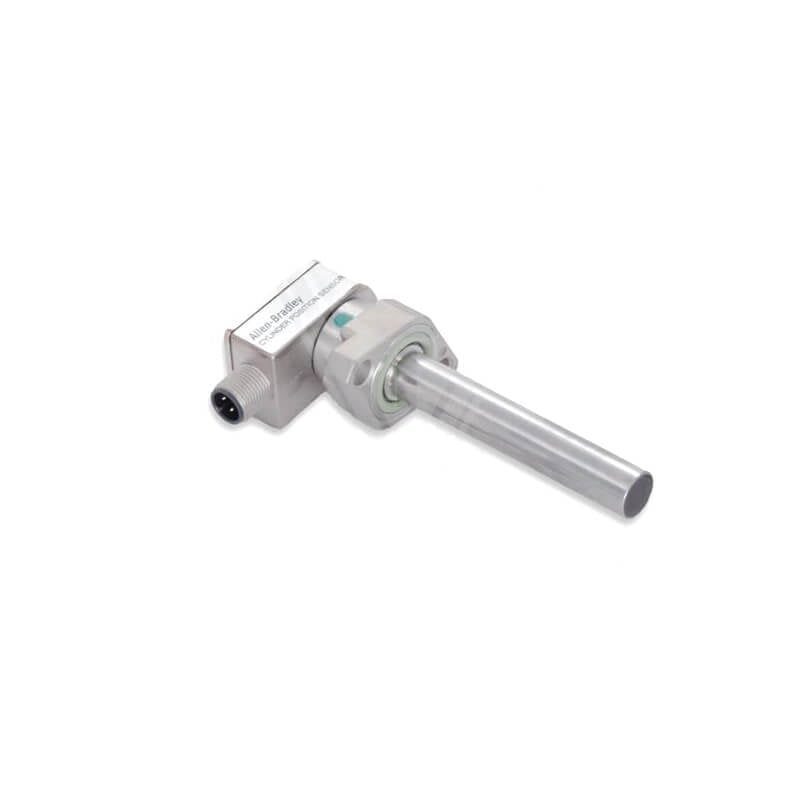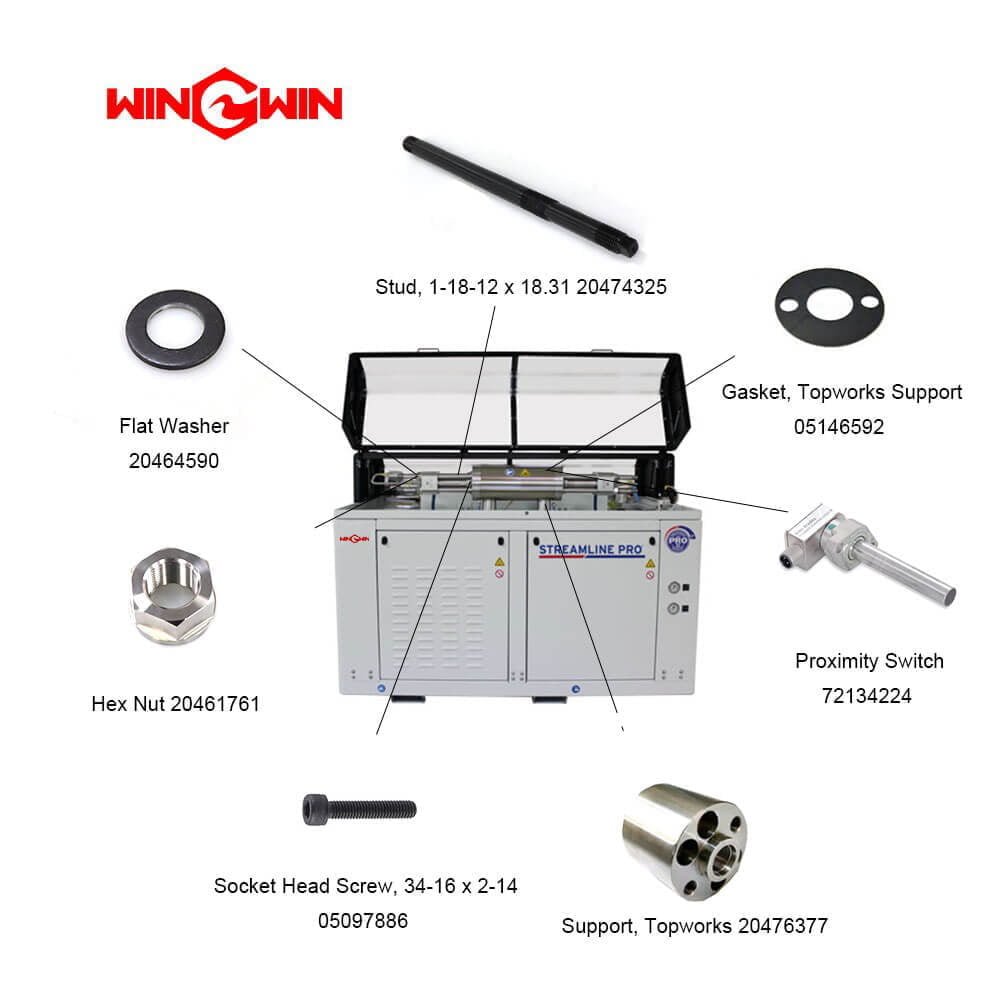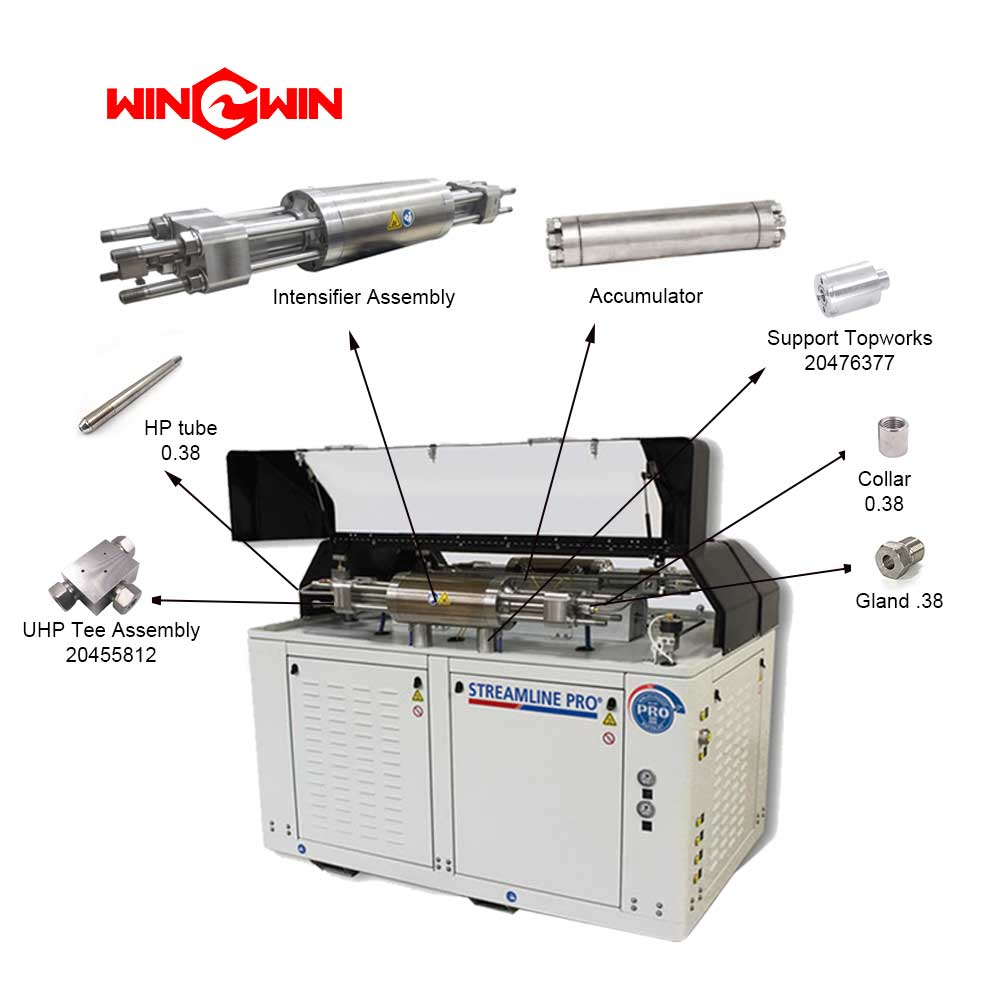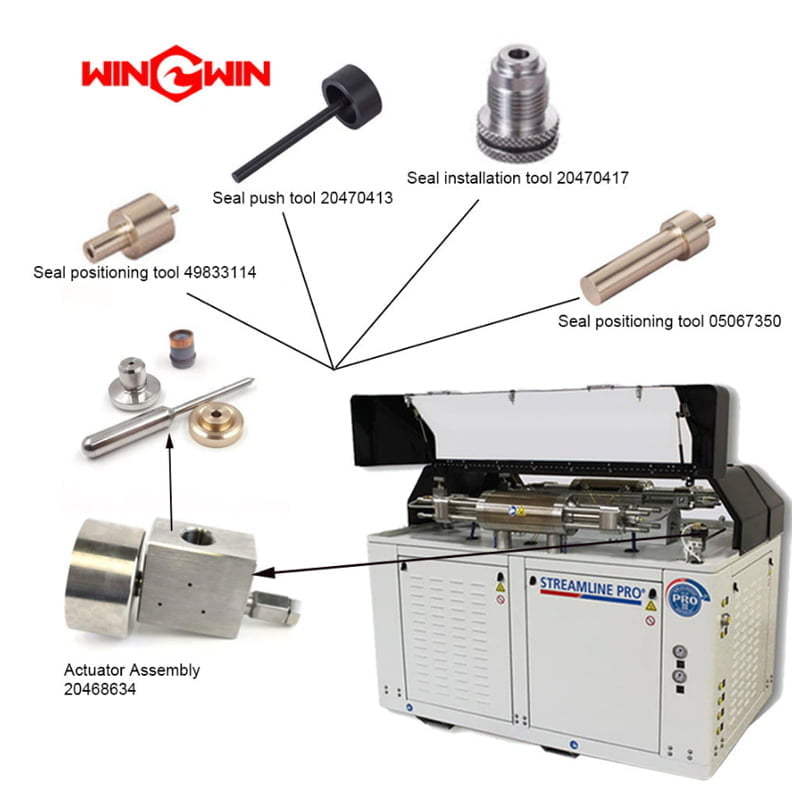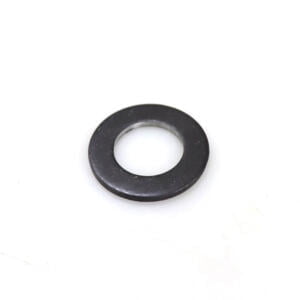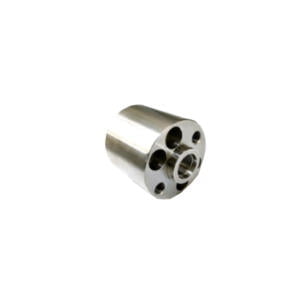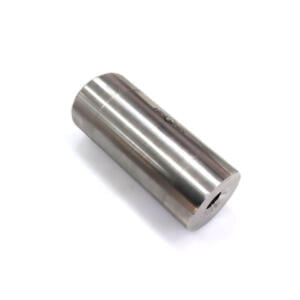Description
Proximity Switch 972134224 is an essential component of 90000 psi waterjet cutting systems.
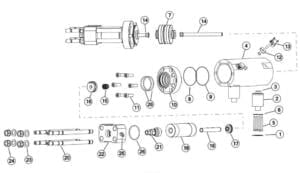
Item | Part Number | Description | Quantity | Item | Part Number | Description | Quantity |
1 | 05146592 | Gasket, Topworks Support | 2 | 14 | 72162253 | Plunger | 2 |
2 | 20476377 | Support, Topworks | 2 | 15 | 05130091 | Hydraulic Seal Cartridge | 2 |
3 | 10118206 | O-Ring, 1.31×1.56× .13 | 2 | 16 | 72175989 | Bushing Retainer Flange | 2 |
4 | 05144514 | Hydraulic Cylinder | 1 | 17 | 72158494 | UHP Seal Assembly | 2 |
5 | 05098991 | Socket Head Screw, 3/8-16×3-3/4 | 8 | 18 | 72166738 | UHP Cylinder | 2 |
6 | 95688743 | Lock Washer, .38 | 8 | 19 | 72163802 | Liner | 2 |
7 | 72101190 | Piston Assembly | 1 | 20 | 20474325 | Stud, 1-1/8-12×18.31 | 8 |
8 | 10074771 | O-Ring, 5.25×5.50× .13 | 2 | 21 | 72170157 | Sealing Head Assembly | 2 |
9 | 05120092 | Backup Ring, 5.25×5.50× .13 | 2 | 22 | 72178493 | Flange Assembly | 2 |
10 | 72175997 | Hydraulic Cylinder Head | 2 | 23 | 20464590 | Flat Washer, 1.13 | 8 |
11 | 05097886 | Socket Head Screw, 3/4-16×2-1/4 | 12 | 24 | 20461761 | Hex Nut, 1-1/8-12 | 8 |
12 | 05144183 | Spacer Assembly, Proximity Switch | 2 | 25 | 20489339 | Adapter, JIC/Pipe, 50× .38 | 1 |
05144191 | O-Ring, .69× .88× .09 | 26 | 72176756 | O-Ring, 3.88×4.25× .19 | 6 | ||
13 | 72141569 | Kit, Proximity Switch | 2 | ||||
| 72134224 | Proximity Switch | ||||||
95119012 | Socket Head Screw, 1/4-20×1 |

A proximity switch is an electronic sensor that detects the presence or absence of an object without physical contact. In the context of waterjet cutting, a proximity switch is often used to detect the position of the waterjet nozzle relative to the workpiece.
In a waterjet cutting system, the proximity switch is typically mounted on the cutting head assembly and is used to sense the distance between the nozzle and the workpiece.
When the distance between the nozzle and the workpiece is within a certain range, the proximity switch sends a signal to the control system, which adjusts the waterjet pressure and other cutting parameters to ensure accurate cutting.
Proximity switches are commonly made of robust materials, such as stainless steel or high-strength plastic, to withstand these conditions.
There are different types of proximity switches that can be used in waterjet cutting systems, including inductive proximity switches, capacitive proximity switches, and photoelectric proximity switches.
The choice of proximity switch rests with the specific application and the material being cut.
1. Inductive proximity switches are commonly used in waterjet cutting because they are reliable and accurate. They generate a magnetic field that is disrupted by the presence of a conductive object, such as the workpiece, which triggers the switch to send a signal to the control system.
Inductive proximity switches are not affected by non-metallic materials, such as ceramics or plastics, and can be used in high-temperature environments.
2. Capacitive proximity switches are another type of sensor that is used in waterjet cutting. They generate an electric field that is disturbed by the presence of any material, whether conductive or non-conductive.
Capacitive proximity switches are often used to detect the presence of liquids, such as water or oil, and can be used in a variety of applications, including level sensing and object detection.
3. Photoelectric proximity switches use light to detect the presence or absence of an object. They emit a beam of light that is interrupted by the object, triggering the switch to send a signal to the control system.
Photoelectric proximity switches can be designed with different sensing ranges and are often used in applications where the object being detected is small or difficult to detect with other types of sensors.
The proximity switch used in a waterjet cutting system that operates at 90000 psi (6,200 bar) is typically designed to withstand the high-pressure environment and harsh conditions of the waterjet cutting process.
The proximity switch used in a 90000 psi waterjet cutting system is similar to those used in lower-pressure systems, but it may have some specific design features to accommodate the high pressure.
One important consideration when choosing a proximity switch for a 90000 psi waterjet cutting system is the sensing range. The switch should be able to accurately detect the position of the nozzle relative to the workpiece even at the high pressures involved in the cutting process.
The switch also need to be designed to withstand the high-pressure water flow and any abrasive particles that are present in the waterjet stream.
90000 psi Waterjet Intensifier Pump
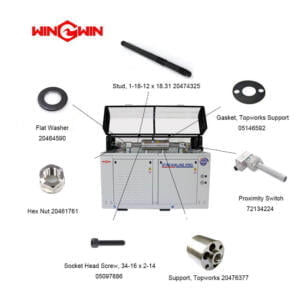
If you have any questions about purchasing or repairing 90000 psi waterjet intensifier pumps and related parts, please contact us.

